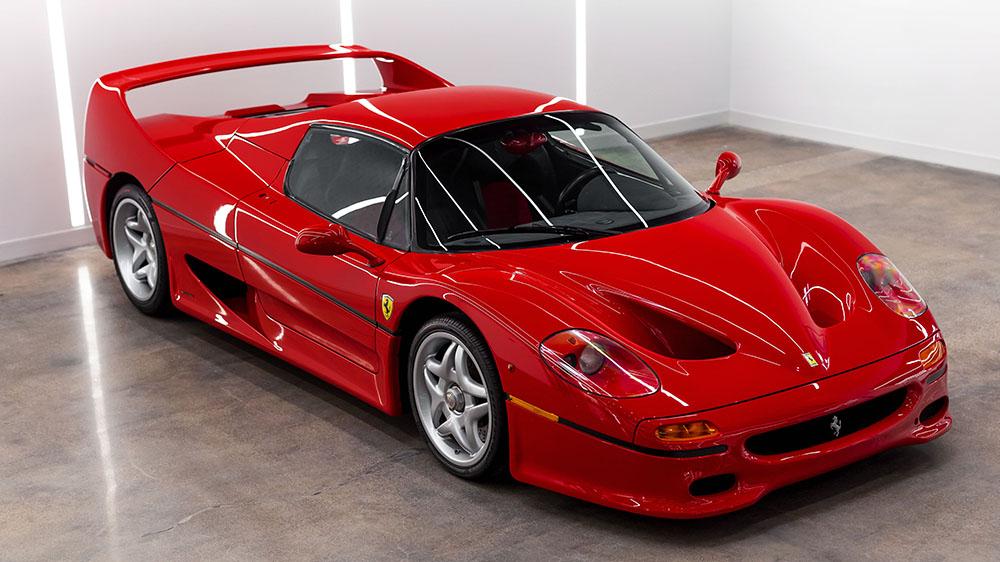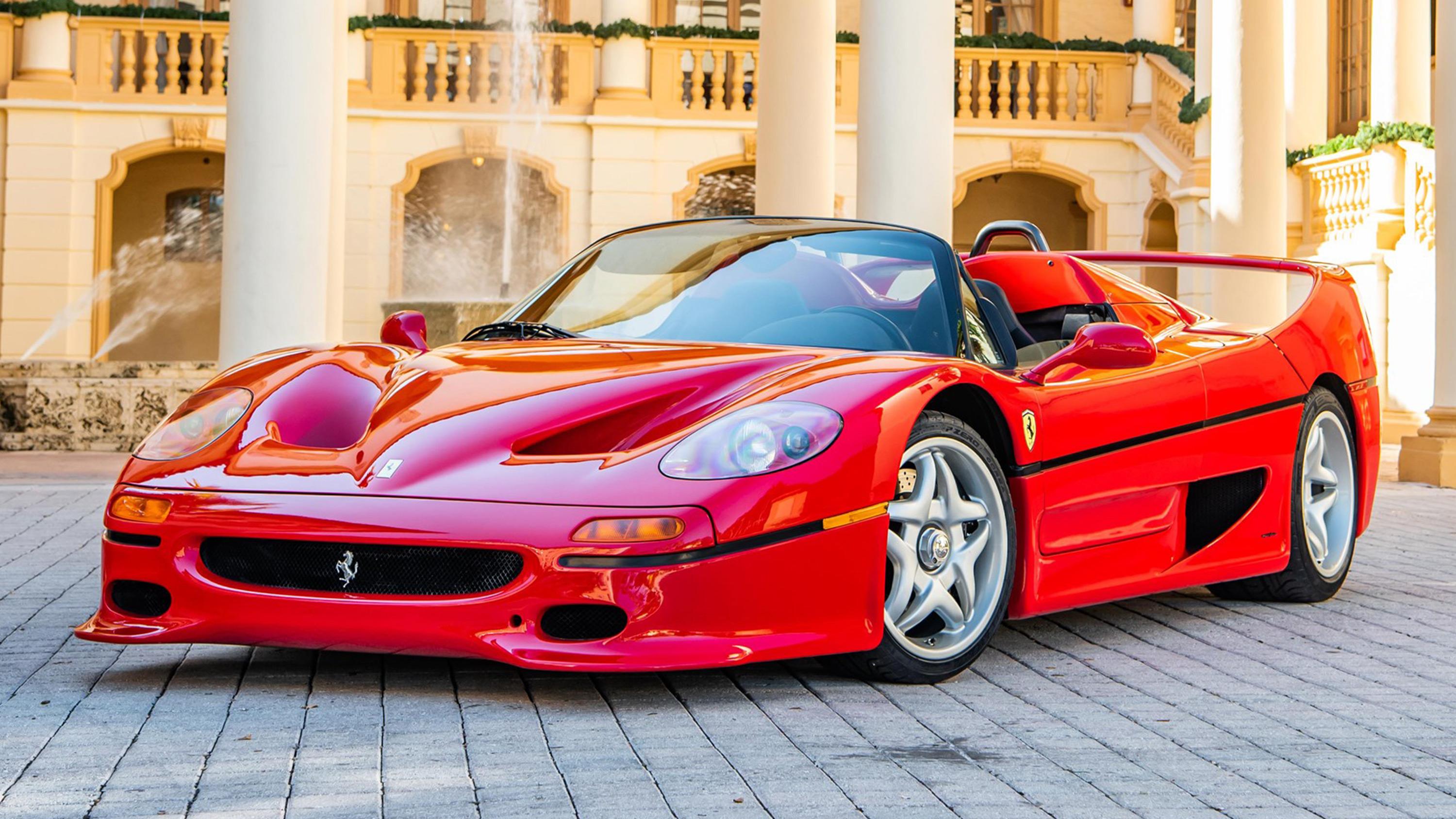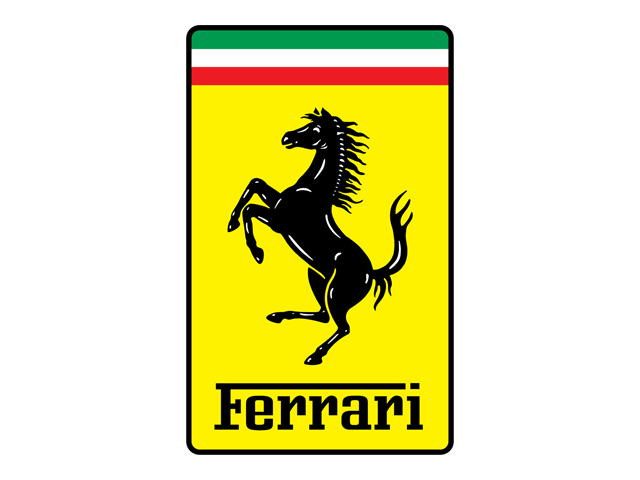1995 Ferrari F50

The descriptions of the Classic Cars in the Directory were partly generated or supplemented with the help of artificial intelligence (AI). The content may occasionally not always be entirely accurate or factually correct despite careful checking.
The Ferrari F50 was introduced in 1995 as a successor to the legendary F40. Built to celebrate Ferrari's 50th anniversary, the F50 was designed as a road-going version of Ferrari's endurance race cars, featuring advanced aerodynamics, a cutting-edge suspension system, and an engine developed specifically for maximum performance on the track.
At the heart of the F50 is a naturally aspirated 4.7-liter V12 engine. With a redline of 8,500 RPM, it produces 520 horsepower and 347 lb-ft of torque. The engine is mounted longitudinally in the center of the car, behind the seats, and is mated to a six-speed manual transmission. The F50 also features a limited-slip differential and a carbon-fiber driveshaft, which helps to reduce weight and improve acceleration.
The suspension system of the F50 is highly advanced, featuring double wishbones and pushrod-actuated coil-over shocks all around. The system was designed specifically for the F50 and is lightweight and highly responsive, making the car an absolute joy to drive at high speeds. The F50 also features Brembo carbon-ceramic brakes, which provide impressive stopping power without excessive fading.
In terms of aerodynamics, the F50 is highly advanced, featuring a large front splitter, a rear wing, and a diffuser. The car's wide stance and low profile provide excellent stability at high speeds, and the aerodynamically-optimized bodywork helps to reduce drag and improve downforce. The F50 also features a removable hardtop, which can be stored in the car's front luggage compartment.
The interior of the F50 is highly focused on driver engagement and performance. The seats are fixed in place, and the pedals and steering wheel adjust to suit the driver's preferences. The instrument cluster is digital, and all of the controls are within easy reach of the driver. Despite its focus on performance, the F50 features amenities like air conditioning and a premium sound system.
Production of the Ferrari F50 was limited to just 349 units, each of which was hand-built in Maranello, Italy. The car's rarity, combined with its advanced engineering and racing heritage, make it a highly sought-after collector's item today. For automotive enthusiasts who prioritize raw performance and technical excellence, the Ferrari F50 is a true masterpiece of engineering.
Milestones
- Ferrari F50 was first unveiled at the Geneva Motor Show in March 1995. - Only 349 units of the Ferrari F50 were produced, making it a rare and coveted supercar. - The Ferrari F50 was the last supercar produced under the supervision of company founder, Enzo Ferrari. - The F50 was built to celebrate Ferrari's 50th anniversary, hence the name F50. - The Ferrari F50 featured a mid-mounted 4.7-liter V12 engine that was capable of producing 513 horsepower and 347 lb-ft of torque. - The Ferrari F50 was the first car to feature Formula 1-derived technology such as the electrohydraulic transmission and the carbon fiber monocoque chassis. - The F50 had a top speed of 202 mph and could accelerate from 0 to 60 mph in just 3.8 seconds. - The Ferrari F50 was fitted with a removable hardtop that could be stored in the car's front trunk. - The F50 also featured a unique aerodynamic profile with a large rear spoiler and front air intakes that were inspired by the Ferrari F1 cars of the time. - The Ferrari F50's interior was spartan by modern standards, featuring simple bucket seats and a minimalistic dashboard design. - The Ferrari F50 remains an iconic supercar, and its limited production numbers ensure that it will continue to be a sought-after collector's item for years to come.Technical
- Engine: 4.7-liter naturally aspirated V12 - Maximum power: 520 horsepower at 8,000 RPM - Maximum torque: 347 lb-ft at 6,500 RPM - Transmission: 6-speed manual - Acceleration: 0-60 mph in 3.6 seconds - Top speed: 202 mph - Weight: 3,307 lbs - Suspension: double-wishbone with coil springs and gas-filled shock absorbers - Brakes: 14-inch ventilated discs with 4-piston calipers - Wheels and tires: 18-inch alloy wheels with 245/35 front and 335/30 rear tires - Body construction: carbon fiber and aluminum honeycomb monocoque with carbon fiber body panels - Aerodynamics: active rear wing and underbody venturi tunnels - Interior: leather upholstery, air conditioning, power windows, and a premium sound system.



